Smartplantedaquarium.com participates in affiliate marketing programs. We may earn commissions on purchases made through our affiliate links. This doesn't affect our content or recommendations and we only recommend products we would put in our own tanks.
The Amazon Sword Plant (Echinodorus amazonicus) is a stunning aquatic plant that originates from the Amazon River basin in South America. Known for its vibrant green leaves and graceful appearance, this plant has become a popular choice among aquarists and aquarium enthusiasts worldwide.
With its origins in the lush Amazon rainforest, the Amazon Sword Plant has adapted to thrive in aquatic environments, making it a perfect fit for aquariums. Its unique characteristics and ease of care make it an excellent choice for both beginners and experienced hobbyists. Let’s delve into the detailed guide about how to plant amazon sword plant.
Contents
Overview of Amazon Sword Plant
With its impressive appearance and easy-going nature, the Sword Plant has rightfully earned its place as a favored choice among aquarium enthusiasts. Whether you are a beginner or an experienced hobbyist, this aquatic gem will undoubtedly add a touch of elegance and natural beauty to your underwater world.
| Attribute | Description |
|---|---|
| Scientific Name | Echinodorus amazonicus |
| Common Name | Amazon Sword Plant |
| Origin | Amazon River basin, South America |
| Difficulty Level | Easy |
| Light Requirement | Medium to high |
| Water Conditions | pH 6.5 – 7.5, Soft to moderately hard water |
| Best Temperature | 72°F – 82°F (22°C – 28°C) |
| Substrate | Nutrient-rich substrate |
| Position in Tank | Background |
| Growth Rate | Fast |
| Maximum Size | Up to 20 inches (50 cm) height |
| Compatible Plants | Java Fern, Anubias, Cryptocoryne, Vallisneria, Hornwort |
| Ideal Tank Mates | Angelfish, Tetras, Gouramis, Corydoras, Swordtails |
| Feeding and Nutrients | Root tabs or liquid fertilizers |
| Maintenance and Care | Regular pruning and removal of old leaves |
| Propagation | Adventitious plantlets and rhizome division |
Appearance
The Amazon Sword plant is a popular choice in freshwater aquariums due to its hardy nature and attractive appearance. Its large leaves provide excellent shelter for fish and a substrate for beneficial bacteria.
- Leaves: Long, broad, and lanceolate (sword-like) with a pointed tip. They are usually bright to dark green, but color can vary depending on the specific variety and the lighting conditions.
- Size: Can grow up to 20 inches (50 cm) in height under optimal conditions, though many specimens stay smaller.
- Roots: A robust root system that anchors the plant in the substrate.
- Stem: Short and not prominently visible as it is often buried beneath the substrate.
- Inflorescence: In its natural habitat, the Amazon Sword can produce a long stem (inflorescence) that bears small white flowers above the water surface.
- Rhizome: The base of the plant where leaves and roots emerge. It’s important not to bury the rhizome too deeply in the substrate to prevent rotting.
Size & Growth Rate
The Amazon Sword Plant can reach up to 20 inches (50 cm) in height and approximately 10 inches (25 cm) in width when fully matured, making it suitable for medium to large aquariums.
The growth rate of the Amazon Sword Plant is moderate to fast, depending on the tank conditions, such as lighting, nutrient levels, and CO2 availability.
With optimal conditions, it can exhibit substantial growth in a relatively short period, producing new leaves regularly. It may reach its full size within several months under ideal growing conditions.
The Benefits of Having It in Your Tank
Shelter and Security: Provides a natural shelter for fish, especially for shy or breeding species, creating a sense of security and reducing stress levels.
Oxygen Production: As with other live plants, the Amazon Sword Plant helps in oxygenating the water, benefiting the overall health of the tank inhabitants.
Nutrient Absorption: Absorbs excess nutrients, such as nitrate and phosphate, from the water, helping to control algae growth and maintain water quality.
Aesthetic Appeal: Adds a vibrant and lush green aesthetic to the aquarium, creating a more natural and pleasing environment.
Enhanced Biodiversity: Supports biodiversity by providing a habitat for beneficial bacteria and microorganisms, which are crucial for a balanced and healthy aquarium ecosystem.
Reduction of Fish Waste: Assists in breaking down fish waste and other organic matter, contributing to a cleaner and healthier tank environment.
Substrate Stability: The extensive root system helps in binding the substrate, preventing erosion and maintaining substrate stability in the aquarium.
Natural Filtration: Acts as a natural filter, removing impurities and improving water clarity.
Aquascaping: Ideal for creating a focal point in aquascapes due to its size and distinct appearance.
Compatibility: Generally compatible with a wide range of fish and invertebrates, making it a versatile choice for different types of aquarium setups.
Water Parameters and Tank Requirements
By maintaining the appropriate water parameters and tank conditions, the Amazon Sword Plant can thrive and become a standout feature in your aquarium, providing aesthetic appeal and functional benefits.
Water Parameters
- Temperature: Ideal temperature range is between 72°F and 82°F (22°C to 28°C).
- pH Level: Prefers slightly acidic to neutral water, with a pH range of 6.5 to 7.5.
- Hardness: Soft to moderately hard water is suitable, with a general hardness (GH) between 3 and 12 dH.
- Lighting: Moderate to high lighting is preferable for optimal growth. Around 10-12 hours of light per day is recommended.
Tank Requirements
- Tank Size: Given its potential size, a tank of at least 20 gallons is recommended.
- Substrate: A nutrient-rich substrate is ideal to provide essential nutrients to the plant. A substrate like aquarium soil or one enriched with laterite is suitable.
- Placement: Best placed in the middle or background of the aquarium due to its height and spread.
- Spacing: If planting multiple, leave at least 10-15 inches between each plant to avoid overcrowding and to allow for growth.
- Fertilization: Root tabs or liquid fertilizers can be added to provide essential nutrients, especially in tanks with low nutrient substrates.
- CO2 Supplementation: While not essential, CO2 supplementation can enhance growth and overall health of the plant.
- Maintenance: Regular trimming of old or yellowing leaves and removal of any debris caught in the leaves.
- Aquascaping: Due to its attractive appearance, it can be used as a focal point in aquascapes and provides excellent contrast to smaller or differently textured plants.
Additional Tips
- Acclimation: Allow the plant to acclimate to the new environment and monitor closely for signs of stress or shock initially.
- Compatibility: Ensure the plant is compatible with the fish and other plants in the aquarium. Some species of fish, like cichlids or goldfish, may uproot or eat the plants.
- Water Quality: Maintain good water quality by performing regular water changes and monitoring water parameters to keep them stable.
How to Plant an Amazon Sword
Prepare the Plant: Rinse the Amazon Sword Plant thoroughly under running water to remove any debris or contaminants. Trim any damaged or rotting leaves and roots using sharp scissors.
Prepare the Substrate: Ensure the substrate in the tank is settled and appropriate for planting, ideally a nutrient-rich substrate. If the substrate is too compact, loosen it slightly to make planting easier.
Planting: Dig a small hole in the substrate using a planting tool or your fingers. Place the Amazon Sword Plant into the hole, ensuring the roots are fully covered. Avoid burying the rhizome (the base where leaves and roots emerge) too deeply, as this can lead to rot. The top of the rhizome should be slightly above the substrate level.
Filling & Positioning: Gently fill in the hole with the surrounding substrate to secure the plant. Position the plant in a suitable location in the tank, considering its potential size and growth. It is typically placed in the middle or background of the aquarium due to its height.
Watering & Initial Care: Ensure the plant is fully submerged and has sufficient water. Initially, monitor the plant closely for signs of stress or shock and remove any dead or decaying leaves promptly.
Lighting & Nutrients: Provide adequate lighting to support growth, ideally around 10-12 hours per day. Consider adding a suitable fertilizer to supply necessary nutrients, especially if the substrate is not nutrient-rich.
Spacing: If planting multiple Amazon Sword Plants, ensure there is enough space between them to allow for growth and to prevent overcrowding, at least 10-15 inches apart depending on the specific variety and available space.
Amazon Sword Maintenance and Care
By following the below mentioned maintenance and care tips, you can ensure the longevity and health of your Amazon Sword Plant, allowing it to continue enhancing the beauty and ecological balance of your aquarium.
Pruning: Regularly prune the Amazon Sword Plant to manage its size and shape, and to ensure it does not overshadow other plants in the aquarium. Use sharp scissors to trim older leaves from the base to promote new growth.
Algae Control: Keep algae under control, as it can compete with the plant for nutrients. Algae can be removed manually from the leaves, and algicides can be used cautiously, following the manufacturer’s instructions. Introducing algae-eating species like shrimps or snails can also help.
Root Care: Monitor the roots regularly for signs of rot or disease and trim any unhealthy roots promptly. Healthy roots are essential for the plant’s nutrient absorption and overall health.
Disease Prevention: Inspect the plant regularly for signs of diseases or pests like snails, and treat accordingly with suitable remedies, ensuring they are plant-safe. Quarantine new plants before adding them to the tank to prevent the introduction of diseases or pests.
Nutrient Balance: Maintain a balance in nutrient levels to avoid nutrient deficiencies or excesses, which can affect the plant’s health and growth. Observe the leaves for signs of nutrient deficiencies such as yellowing or holes and adjust fertilization accordingly.
Adjusting Light Intensity: If the plant exhibits signs of light stress, such as pale leaves or excessive algae growth, adjust the light intensity or duration accordingly.
Monitoring Growth: Keep a close watch on the growth of the plant, ensuring it is growing at a healthy rate and not exhibiting stunted or abnormal growth.
Amazon Sword Propagation
The Amazon Sword Plant can propagate through a method called adventitious shoot formation or by producing runners. Here’s how you can propagate it:
Propagation by Runners:
- Observation: Monitor the base of the mature Amazon Sword Plant for the growth of runners. Runners are long stems that grow horizontally along the substrate and produce baby plants at intervals.
- Development: Allow the baby plants (also known as plantlets) to develop on the runners. They will form their own roots and leaves while still attached to the runner.
- Separation: Once the plantlets have developed a sufficient root system and a few leaves (usually when they are around 2-4 inches tall), they can be separated from the runner using sharp scissors.
- Planting: Plant the separated plantlets in the substrate, ensuring the roots are well-covered but the rhizome is not buried too deeply. Provide them with adequate light and nutrients to establish themselves in the new location.
Propagation by Adventitious Shoots:
- Observation: Occasionally, the Amazon Sword Plant may produce adventitious shoots directly from the base or the rhizome.
- Development: These shoots will develop roots and leaves while still attached to the parent plant.
- Separation and Planting: Once they are large enough to survive independently, they can be carefully separated and planted in a new location following the same planting instructions as above.
Aftercare:
- After planting, monitor the new plants closely for signs of stress or shock and provide them with suitable growing conditions, including adequate nutrients and light, to ensure their successful establishment and growth.
- Regularly trim the new plants to manage their size and shape, and remove any yellowing or damaged leaves promptly.
Aquarium Mates and Compatibility
The Amazon Sword Plant is generally a versatile and adaptable aquarium plant, making it compatible with a wide range of tank mates. Here are some considerations for its compatibility:
Compatible Tank Mates:
- Community Fish: Ideal for community tanks with non-aggressive fish such as Tetras, Guppies, Mollies, Platies, and Rasboras.
- Shrimps and Snails: Compatible with most aquarium shrimps and snails, which can even contribute to the plant’s health by cleaning algae off its leaves.
- Other Plants: Can be paired with various other aquarium plants. However, consider the plant’s size and light needs to avoid overshadowing smaller or less light-tolerant plants.
- Bottom Dwellers: Works well with bottom-dwelling species like Corydoras and Loaches, as it provides shelter and may have food particles trapped in its leaves.
- Peaceful Cichlids: Can be kept with more peaceful and plant-friendly cichlids like Angelfish and Discus.
Recommended Plants to Grow With Amazon Sword
I typically enjoy pairing my Amazon Sword with a lush backdrop of Asian Flame Moss or the striking Bucephalandra. The latter injects a striking contrast and rare reddish hue into any aqua-scape. However, if you prefer a budget friendly option, you can’t go wrong with a carpeting of Asian Flame Moss.
Bucephalandra
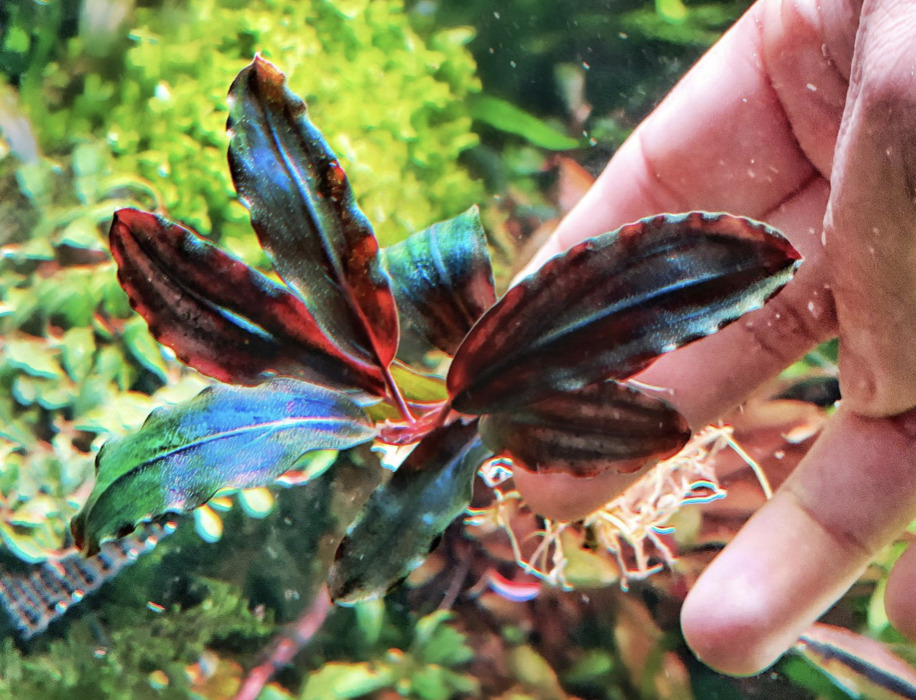
Asian Flame Moss
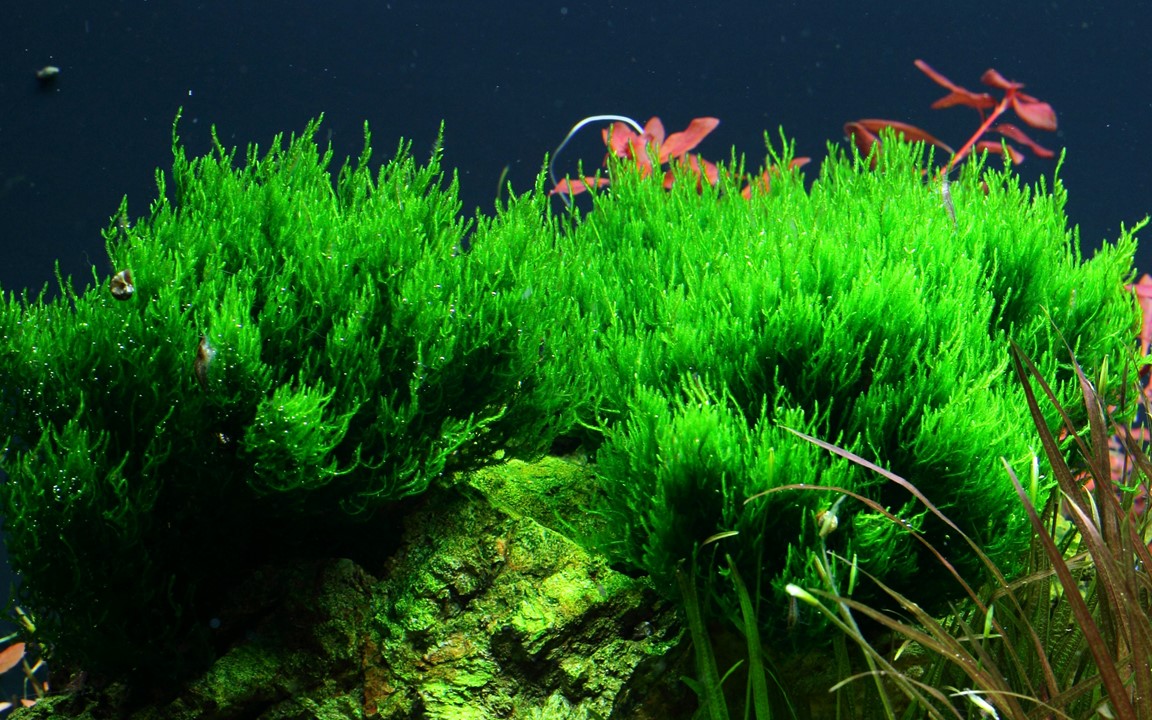
Incompatible Tank Mates:
- Herbivorous Fish: Not suitable for tanks with herbivorous fish like Goldfish, as they may eat the leaves of the plant.
- Digging or Burrowing Fish: Species that dig or burrow, like some Cichlids, can uproot the plant and may not be the best companions.
- Aggressive Fish: Aggressive or territorial fish can damage the plant and stress other tank mates, impacting the overall health of the tank environment.
Considerations:
- Spacing: Ensure that there is enough space in the aquarium to accommodate the plant and its potential tank mates comfortably.
- Tank Environment: Maintain a stable and suitable environment, including appropriate water parameters and shelter, for all inhabitants.
- Observation: Regularly observe the interactions between the plant and its tank mates to ensure harmony in the tank and intervene if any issues arise.
Conclusion
Planting and caring for an Amazon Sword plant can be a rewarding and enriching experience for any aquarist or hobbyist. By following a few simple steps, you can ensure the successful establishment and growth of this stunning aquatic plant in your aquarium.
Choose a suitable substrate, provide adequate lighting and nutrients, and maintain proper water parameters. Additionally, trimming and pruning regularly will help maintain the plant’s health and promote lush growth.
With patience and diligence, you will create a vibrant underwater landscape that showcases the beauty of the Amazon Sword plant, enhancing the aesthetics and ecological balance of your aquarium.
Frequently Asked Questions
1. How fast does Amazon Sword Plant grow?
The growth rate of the Amazon Sword Plant is considered fast among aquarium plants. In ideal conditions, it can grow several inches in height within a month. Regular pruning may be necessary to keep the plant from overshadowing other aquarium inhabitants.
2. How big does Amazon Sword Plant grow?
Under optimal conditions, the Amazon Sword Plant can grow to an impressive size. It can reach a height of up to 20 inches (50 cm) and has broad leaves that can span 10 inches (25 cm) or more. The plant’s substantial size and lush appearance make it a captivating centerpiece in any aquarium.
3. Is Amazon Sword Plant suitable for beginners?
Yes, the Amazon Sword is considered easy to grow, making it a popular choice among aquarium hobbyists, including beginners. It is adaptable and can tolerate a range of water conditions. It can thrive in different lighting conditions, but moderate to high lighting is preferable. The plant is hardy and, with basic care and suitable tank conditions, it can grow and flourish without much hassle.
4. Is Amazon Sword Plant suitable for a low-tech aquarium?
Yes, the Amazon Sword Plant is well-suited for low-tech aquarium setups. It can thrive with basic lighting, regular water changes, and minimal use of additional equipment. While providing higher lighting and fertilization can enhance growth, it can still flourish in low-tech environments, making it a versatile and accessible choice for all levels of hobbyists.
5. How much light does my Amazon Sword need?
The Amazon Sword Plant typically requires moderate to high lighting for optimal growth. Around 10-12 hours of light per day is recommended. While it can survive in low light conditions, its growth may be slower, and the coloration may not be as vibrant. Ensuring the plant receives adequate and suitable lighting will help in maintaining its health and appearance.
6. Do my Amazon Swords need soil?
Amazon Swords do best in nutrient-rich substrates, which can include specialized aquarium soil. However, they do not specifically need soil and can grow in other types of substrates like sand or gravel, provided they receive adequate nutrients. If the substrate is not nutrient-rich, it is beneficial to supplement with root tabs or suitable fertilizers to ensure the plant receives the necessary nutrients for healthy growth.
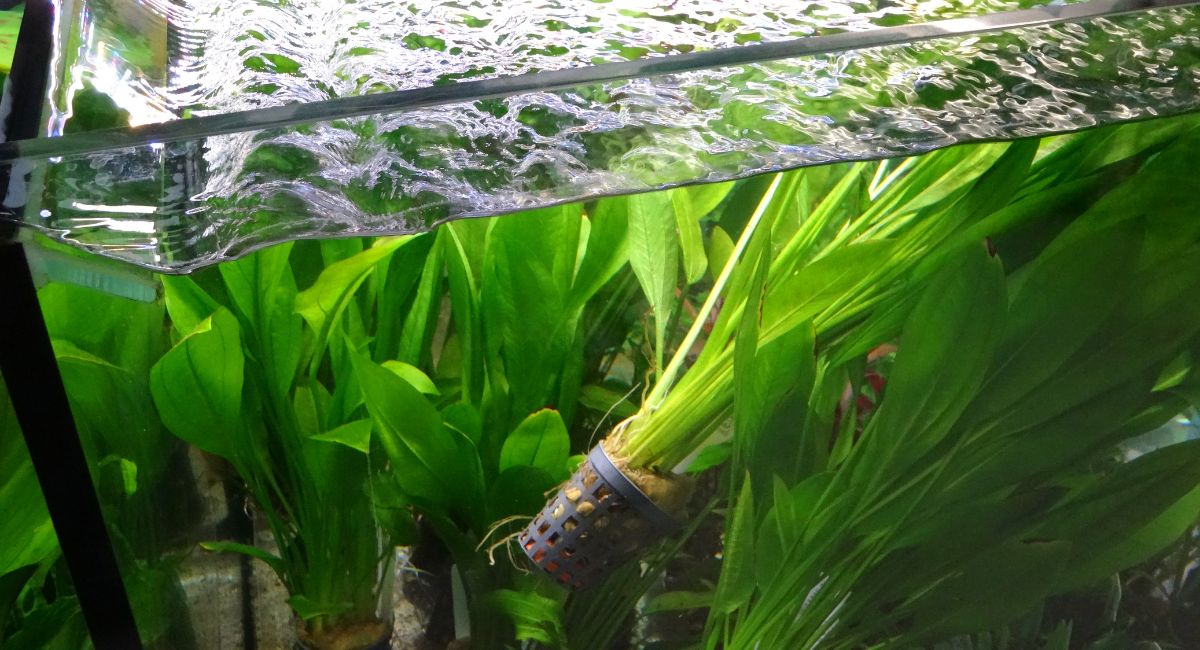
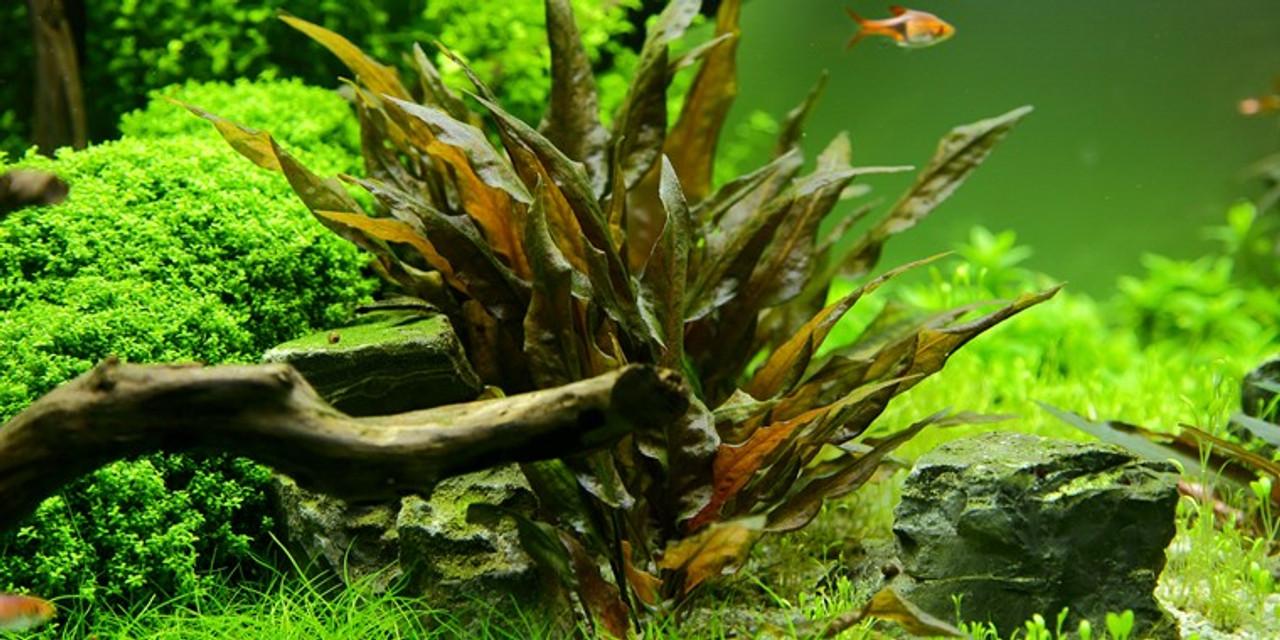
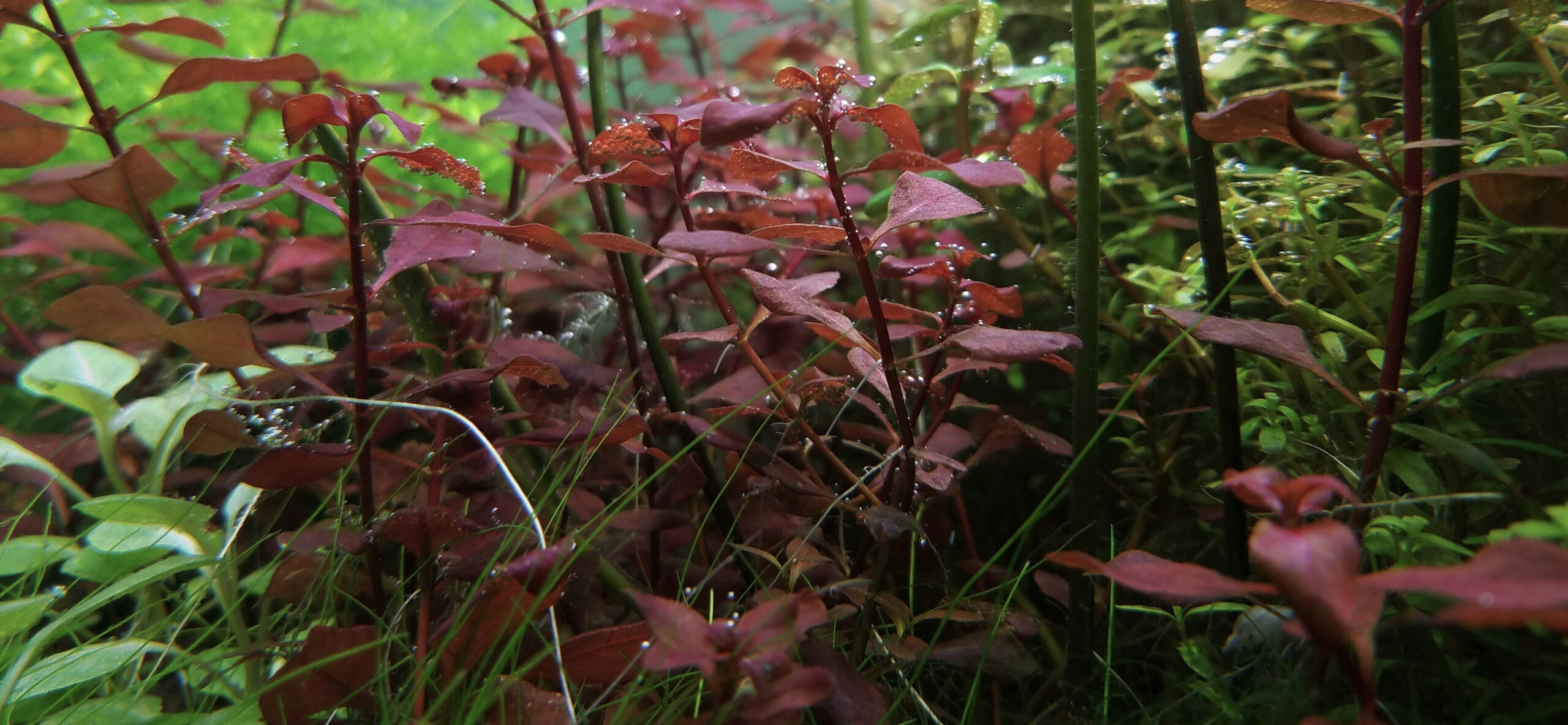
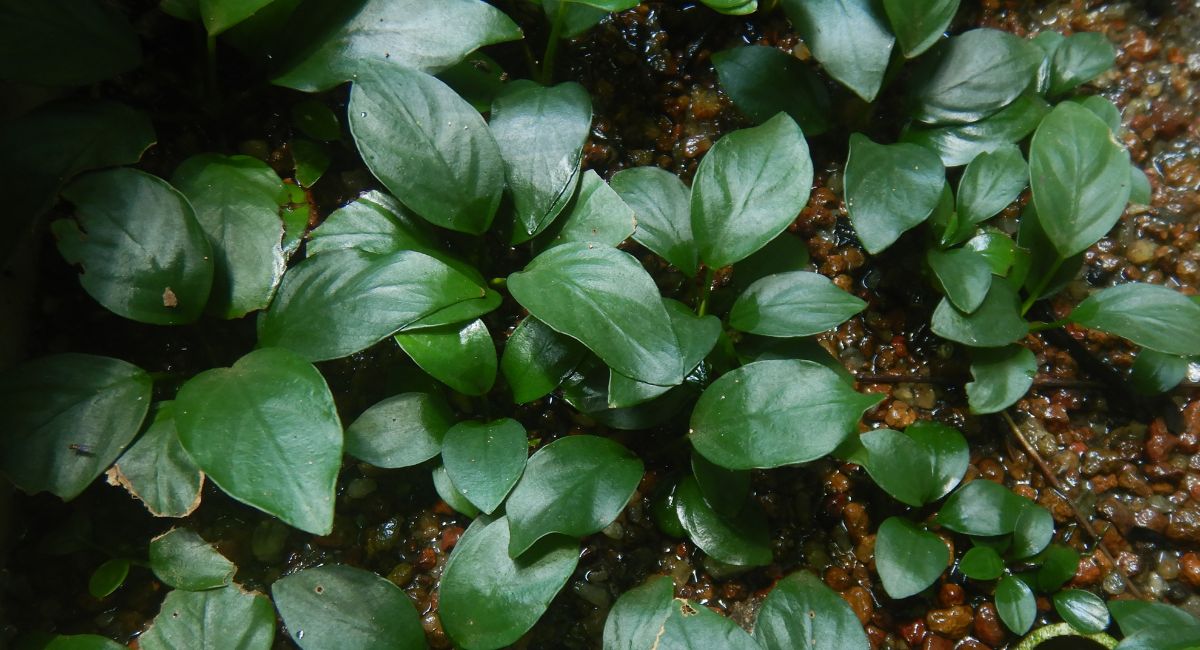



Probably the best article I’ve read to date on this aquarium plant. Thank you.